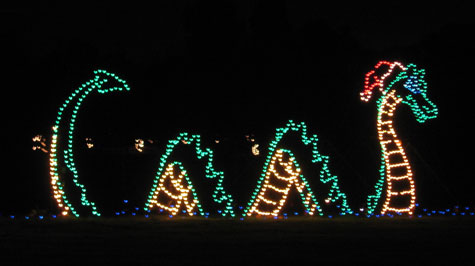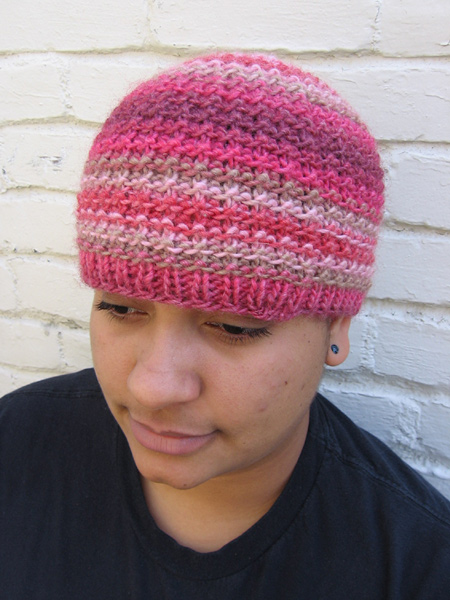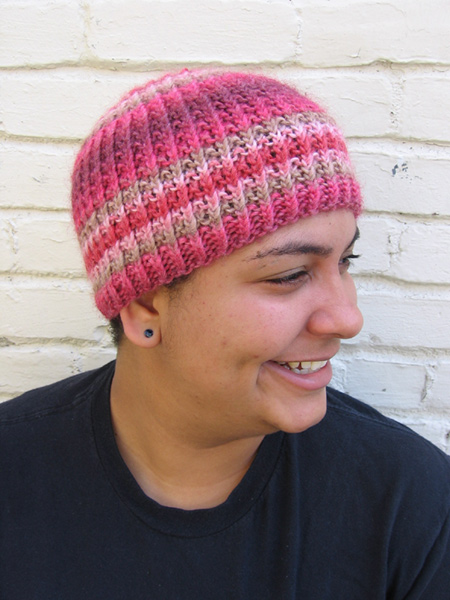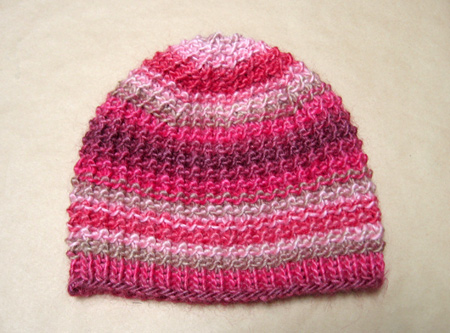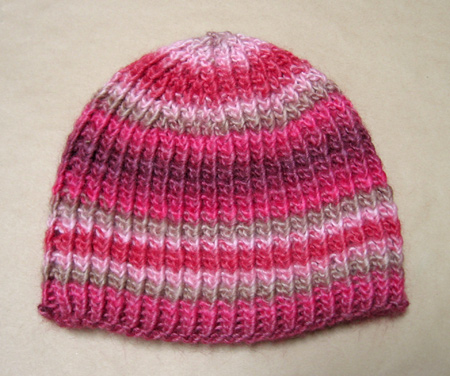This past week, I’ve taken a break from sock design to knit up a pair of hats. There were some stitches I’d been wanting to play with, and I was longing for a simpler pattern on needles a bit bigger than toothpicks. The end results are the two hats you see here. First up is Yarrow, a very quick knit (only 36 rounds using bulky weight yarn).
Here it is in Baby Alpaca Bulky—

And here it is in a yarn I picked up at Hobby Lobby while visiting Iowa—


(The model is my former student Maryam, who’s on break from Durham where she’s studying law.)
For Yarrow, just cast on 64 stitches in the round on 16″ U.S. 10 needles, placing a marker every 16 stitches. Work 4 rounds of P1, K1 rib. After that just knit from the chart, repeating the chart 4 times on each round; the markers will indicate the chart repeats. Switch to double points when you need to (I moved up to U.S. 10.5 needles here because I knit more tightly on double points than I do on circulars). Voila—weave in ends and you’ll have a hat!
Note that the symbol key is at the end of this post, since it’s the same for both hats.

*****
I named the second hat Laurel. It’s related to Yarrow, but worked in worsted weight yarn, with just a few bobbles.
Here it is, knit up in Paton’s Bamboo Angora—


For Laurel, cast on 96 stitches in the round on U.S. 7 needles, placing a marker every 24 stitches. Work 6 rounds of P1, K1 rib. After that knit through the first chart once (again, you’ll be repeating the chart 4 times on each round), then work rounds 1-14 a second time. Once that’s done, work the decrease chart, switching to double points when necessary. Weave in the ends and presto—another hat!


*****
Key to chart symbols:
A blank square is a knit stitch.
A dash – is a purl stitch.
/ is knit 2 together.
\ is slip2 stitches knit-wise one at a time, return these to the left-hand needle, and knit them together through the back loop.
The funny tent-like symbol is a double decrease. Slip 2 stitches together knit-wise, knit the next stitch, then pass the pair of slipped stitches over the knit stitch and drop.
The dark dot is a bobble. work k1, yarn over, K1 into this stitch. Turn your work and purl back along these three stitches. Turn your work again. Move the first two stitchs on your left need onto your right needle. Pass the first of these two over the second and drop. Return the remaining stitch to the left needle. Pass the second stitch on the left needle over this stitch and drop. Return the remaining stitch to the right needle and continue working as charted.











